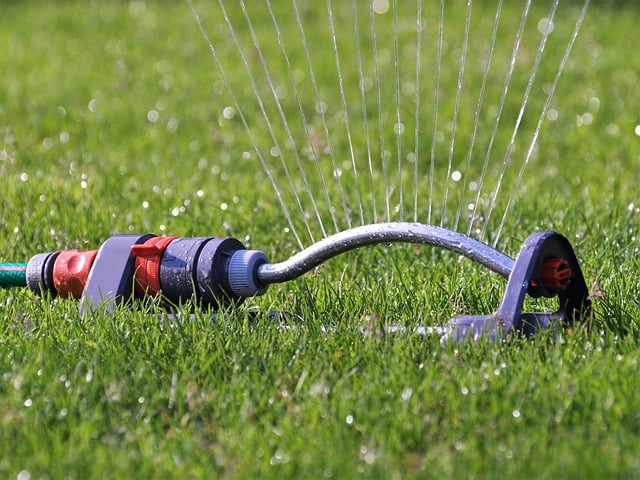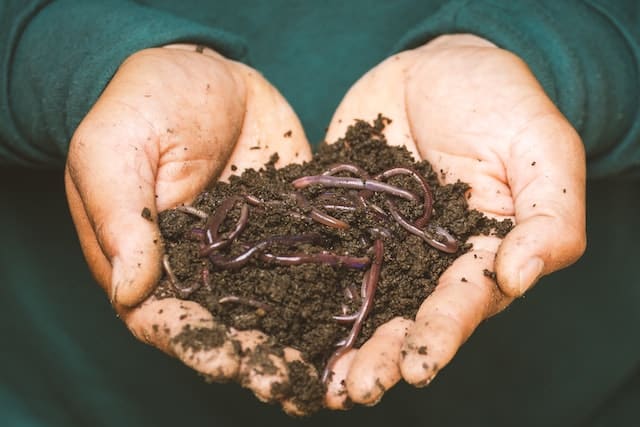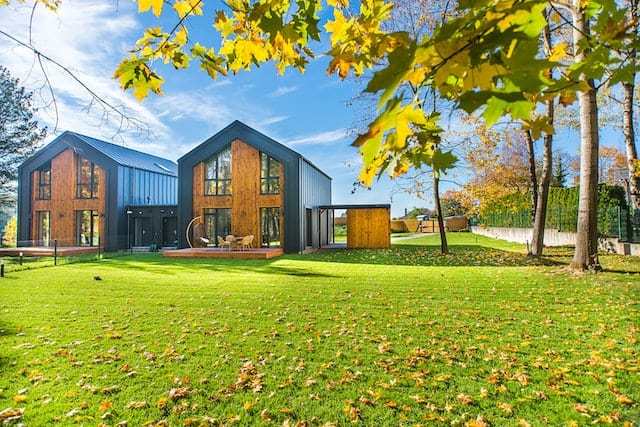Tropical St. Augustine grass is native to Mexico, Central and South America, and the south-eastern United States. While its lush, dark green appearance and relatively low maintenance make for a beautiful and easy-to-care-for lawn, some homeowners may find their St. Augustine grass turning yellow.
St. Augustine grass turning yellow can be due to fungal disease in your lawn, overwatering or underwatering your grass, iron deficiency in the soil, or imbalance in nitrogen levels. Local pests and high temperatures can also play a part in yellowing grass.
So how can you fix your lawn and deal with these issues? Keep reading to find out! In the rest of this article, I’ll go into detail concerning fungus, watering, and iron and nitrogen levels to keep your grass happy, healthy, and beautiful.
St. Augustine Grass Turning Yellow

If your grass turns yellow, you want to return it to its lovely lush green. But first, you’ll need to figure out why your grass has turned yellow and what to do about it. Let’s get into it!
1. Fungal growth
St. Augustine grass can sometimes turn yellow due to fungal disease in the grass and soil. One typical fungal infection of many types of grass is caused by a fungus called Rhizoctonia solani and results in large patches that can turn brown or yellow, usually occurring beneath shaded areas in humid, warm temperatures.
To determine if your grass is infected with this fungus, you can check the pattern of the color change. Brown or yellow spots will present as a ring in the springtime – the change in colored layers indicates new grass is growing.
When the grass is suffering from a fungal infection, the blades will also pull easily from the ground and have rotten leaf sheaths.
To prevent fungal diseases from occurring, reduce nitrogen supplements during spring (April to June) so that the addition of nitrogen doesn’t encourage growth in any vulnerable areas.
Fungicide can be applied during the fall (before the grass goes dormant) and before the grass begins to grow again in the springtime. However, if you notice an infection during its active growing phase, it can be treated with fungicide by applying it at that time.
2. Overwatering or underwatering

Grass needs water to grow, but too much or too little can have a negative impact on your grass’ health and cause it to yellow. Water management is essential, and there are several factors you should be on the lookout for when maintaining your lawn to prevent both overwatering and underwatering.
Excessive watering can cause root rot in St. Augustine grass, which leads to the leaves turning yellowish. Overwatering can push nutrients in the soil beyond the reach of the grass’ short roots. Large amounts of rain or overwatering also have the potential to spread diseases or fungal infections around your lawn or garden.
To avoid water damage, begin using a schedule for watering and fertilizing your grass. For best results, you should add nutrients during the warm months. You’ll also have to choose a fertilizer based on what kind of plants you have.
St. Augustine grass likes wet soil throughout the whole growing season in the spring and summer and doesn’t fare well in drought. It starts withering away when it’s a year old and turns yellow too, especially when it’s first planted.
To help avoid underwatering, after your grass has been established, you can allow the top 1 inch of soil to dry out between watering – it’s important to keep an eye on this, as you don’t want the grass to become too dry. You can water your lawn around an inch a week, keeping in mind that rainfall factors in, too.
3. Imbalanced nitrogen
Dogs peeing in your grass has taken away the neat look of your grass. As the urine seeps in, it causes yellow patches to form in those areas.
The blades can become yellow because of increased nitrogen in the urine, which builds up over time. This can be problematic as nitrogen is essential for proper leaf production, but too much leads to damaged leaves and roots.
Frequent animal urination can break down the turf and ground of your lawn. It is a common misconception to think that if you water your yard regularly, you’ll avoid this problem. If this isn’t an adequate solution, then it is worth looking into some animal deterrent spray or other tactics to keep them off your turf.
Very high levels of nitrogen are bad for your grass, but the same thing can be said about a lack of it. When you have an inadequate amount of nitrogen, the grass will turn yellow and won’t fully grow.
If your soil is low in nitrogen, you can combat this with appropriate nitrogen fertilizers that release nitrogen quickly.
However, these fertilizers can only be applied during hot and dry weather to inhibit nutrient deficiency caused by soil leaching. In order to better fertilize your yard, you’ll want to pay attention to the weather patterns in your area.
4. Iron deficiency

Iron deficiency can be a common cause of yellowing in St. Augustine grass, which can result from large amounts of phosphorus in the soil or from increased pH. Grasses require iron for biological processes like building chlorophyll, photosynthesis, and fixing nitrogen.
Too much phosphorus can greatly reduce your grass’ iron-absorbing ability. St Augustine grass prefers higher levels of iron. However, it doesn’t have a deep root system and can’t reach nutrients deep in the soil.
A fertilizer with a lower amount of phosphorus is preferable to use, or you can eliminate the phosphorus entirely.
St. Augustine grass can grow well in soil with a pH between 6.0 and 6.5 but can still survive as pH level increases. When the pH reaches 7, the amount of iron taken up also decreases. The less iron the plant absorbs, the more likely it is that grass will turn yellow. This condition is called chlorosis.
See a similar post: How To Make St. Augustine Grass Spread Quickly
Summary
St. Augustine grass can turn yellow for a variety of reasons: fungal growth, overwatering or underwatering, iron deficiency from excess phosphorus, and imbalances in nitrogen in the soil.
Careful fertilization, proper watering schedules, and observation of weather conditions can all help prevent your St. Augustine grass turning yellow.
Frequently Asked Questions
Will yellow St. Augustine grass grow back?
It’s possible to revive your St. Augustine grass once it’s become yellow in patches through proper intervention and further preventative care, as outlined above. However, if your grass has been yellow for too long, it may be entirely dead. This means you’ll have to start over with your lawn.
Why does St. Augustine grass turn yellow?
St. Augustine grass can turn yellow for several reasons:
- Fungal disease in your lawn. This causes brown or yellow patches and loose blades. These infections usually occur in dark, moist areas.
- Overwatering or underwatering. Both of these can inhibit your grass from getting appropriate nutrients. Overwatering can also cause root rot, which kills grass.
- Iron deficiency. This can be caused by high pH or increased phosphorus levels, making your grass unable to absorb iron. This can be prevented and treated with appropriate fertilizer use.
- Nitrogen imbalance. This can be caused by fertilizer issues or animals urinating in patches on your lawn.
How can I fix yellow St. Augustine grass?
Yellow St. Augustine grass can be fixed by following the proper treatment for whatever made the grass yellow in the first place. To determine this, you can follow some of the above guidelines in this article to discover if your grass is suffering from a fungal infection, nutrient deficiency, or watering issues.
Many of these problems go together, and taking the proper preventative steps can help fix yellowed grass.

Hey, I’m Lisa and I’ve been an avid gardener for over 30 years. I love writing, talking and living in the garden! Feel free to connect with me on my socials below

